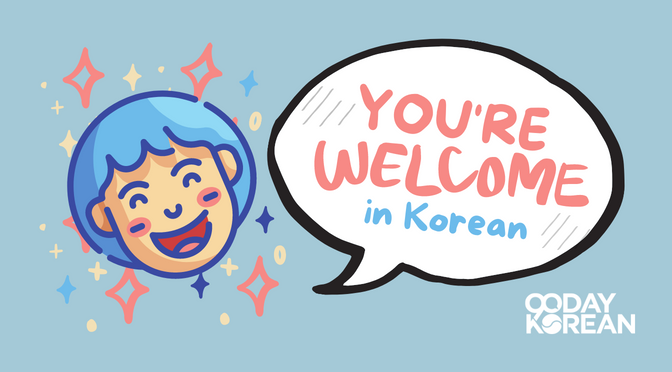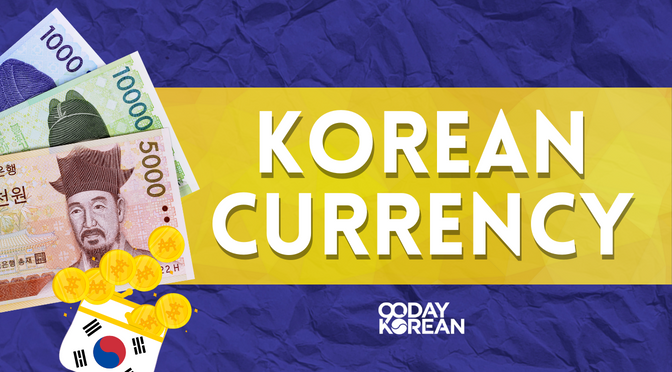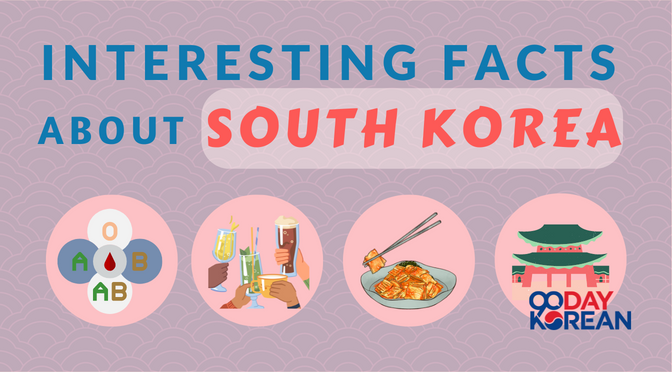Curious about how to say “you’re welcome” in Korean? In this lesson, we’ll explain what you need to know!
Previously, we learned how to say “thank you” in Korean. After somebody says thank you, it’s good manners to reply with a “you’re welcome.” But how do you say it in Korean?
We have a FREE PDF guide of this lesson that you can take with you on the go. Check it out below:
Different ways to say “You’re welcome” in Korean
If someone says thank you, the proper response would be, “you’re welcome.” However, there are different ways to say it in Korean, depending on who you are talking to.
“You’re Welcome” in Korean Video Lesson
The video below will show you the different ways to say “you’re welcome in Korean.
If you learned something from our video, make sure to subscribe to our Youtube Channel too!
Formal “You’re Welcome” in Korean
Here are the different ways of saying “you’re welcome” in Korean in a formal way.
1.
The Korean word 천만에요 (cheon-man-e-yo) comes from the number 천만 (cheonman), meaning “ten million” in English. The logic behind this expression is that the thing you are being thanked for doing is so small that even if you did it ten million times, the other person still wouldn’t need to thank you.
This expression is often seen when you look up “you’re welcome” in the dictionary. However, it is a very formal way to say it and isn’t used that often in spoken conversation. It mainly appears in books or translations rather than in everyday spoken Korean.
2.
This is another expression that can mean “you’re welcome.” It is quite formal and again isn’t used that often.
3.
This expression translates to “no” in formal Korean. Korean’s usual spoken response to “thank you” is “no.”
If you are speaking in a formal setting such as a job interview, then you may wish to use this higher level of formality and say 아닙니다 (animnida) instead of 아니에요 (anieyo).
Standard “You’re Welcome” in Korean
If you want to sound a bit more casual, you can use these standard ways of saying “you’re welcome” in Korean.
1.
The most common response to “thank you” in Korean is 아니에요 (anieyo). This is the word that you will hear the most often. Therefore, if you want to learn one way to say “you’re welcome” in Korean, then learn this expression!
When saying 아니에요 (anieyo), it is important to get your voice tone correct. Rather than saying “no” in a short, sharp manner, you need to elongate and stretch this word so it sounds more like 아… 니에에요 (a…nieyo). This helps show the meaning behind the word—a kind way of saying “no”!
2.
Literally meaning “it’s alright” or “its okay,” 괜찮아요 (gwaenchanayo) can also be used when saying “you’re welcome.” If you want, you combine this with 아니에요 (anieyo) and say 아니에요, 괜찮아요 (anieyo, gwaenchanayo). As with 아니에요 (anieyo), you need to use your voice tone to help convey your meaning when saying 괜찮아요 (gwaenchanayo). Practice saying it kindly, and you’ll be all set!
Informal “You’re Welcome” in Korean
Lastly, if you’re speaking with your close friends or someone of the same age, you can use these informal ways of saying “you’re welcome” in Korean.
1.
This is the informal version of the word 아니에요 (anieyo), as discussed above, which means “no.”
2.
괜찮아 (gwaenchana) is the informal version of 괜찮아요 (gwaenchanayo). When speaking informally, informal versions of “no” and “it’s alright” can be used. Like the regular versions of these words, 아니야 (aniya) and 괜찮아 (gwaenchana) can be combined, and their meaning needs to be conveyed by your voice tone.
“You’re Welcome” After Giving a Gift
If somebody says “thank you” after receiving a gift, you can say “It’s nothing special.” In Korean, you should say 별거 아니에요 (byeolgeo anieyo).
Instead of saying “you’re welcome,” sometimes the person being thanked says “thank you,” too.
For example, if somebody says “thank you for coming,” you can say “thank you for inviting me” (초대해 주셔서 감사합니다 | chodaehae jusyeoseo gamsahamnida).
If you only want to learn one way how to say “you’re welcome” in Korean, then learn the word 아니에요 (anieyo). Remember, voice tone is very important when saying this word. Listen to other people saying it in natural conversations and copy their voice tone to get your message across.
If you learn good manners and properly say this phrase, you’ll be “welcome” anywhere!
How to Say “Welcome” in Korean
Whether you are having friends over or wondering what shop assistants are saying to you, it is helpful to know how to say “welcome” in Korean.
Once you learn this word, you will start noticing it a lot. Let’s get to it and give this phrase a nice warm “welcome!”
“Welcome” in Korean
If you look up “welcome” in Korean in the dictionary, you will more than likely see the word 환영하다 (hwanyeonghada).
This word is easy to remember (it sounds like 안녕 (annyeong), the word for “hello” and is easy to use as it is a 하다 (hada) verb, so can be used in a similar way to the Korean word 좋아하다 (joahada | to like).
However, this is not the most common way of saying “welcome” in Korean. The most common way of saying welcome uses the word 어서 (eoseo), which means “quickly,” and the verb 오다 (oda), which means come.
These words are used in what is known as the “imperative” form, the form used to give commands or orders. By learning how to say “welcome” in Korean, you will also learn how to use this type of grammar.
Formal “Welcome” in Korean
Formal Korean should be used when making announcements, presentations, or during an interview. Here is how you can say “welcome” in Korean formally.
1. 어서 오십시오 (eoseo osipsio)
This phrase is used on its own and can be heard when someone welcomes you into a room or place.
Formal Korean usually ends in 입니다 (imnida) or 습니다 (seumnida), but the imperative (commands and orders) is an exception to this.
Standard “Welcome” in Korean
This is the standard way of saying “welcome” in Korean.
1. 어서 오세요 (eoseo oseyo)
You can use this expression when talking to people who are older or not particularly close to you. It is also the most likely form of the word you will hear when entering a shop.
The ending 세요 (seyo) comes from inserting 시(si) into the word to make it polite. You will come across 세요 (seyo) in several situations: Giving orders and commands, asking questions, and speaking to your elders.
Other examples of commands in Korean
앉으세요 (anjeuseyo) – Please sit.
가세요 (gaseyo) – Please go.
주세요 (juseyo) – Please give.
사세요 (saseyo) – Please buy.
(사세요 (saseyo) could also mean “live,” so be careful when hearing this word)
Informal “Welcome” in Korean
You can use this expression with people close to you and of a similar or younger age.
1. 어서 와 (eoseo wa)
There is no difference between the imperative (commands and orders) and the words used in informal Korean when saying a regular sentence. As a result, 와 (wa) can mean “come” as in “I come,” but it can also mean “please come,” depending on the context.
Wrap Up
Ready to level up your Korean? Check out this online guide for learning the language. Our complete list of everyday Korean phrases will also help you with spoken Korean and even Korean culture. If you want, we also have a structured online program that will teach you how to have a 3-minute conversation in the first 90 days. Learn more about it here!






I agree with you. I heard from my Korean colleague, if junior and senior already knew each other it’s better to not say 천만에요 after the senior thank the junior. The senior might think “We already knew each other why you consider me as a stranger?” .
For natural, its better to use 아닙니다
Hi duma! Thank you for the comment. 아닙니다/아니에요 is also very common to say instead of 천만에요. ^^
It’s nice to learn how to say “You’re welcome” in Korean. Another lesson for me. Maeu gamsahamnida!
Awesome! It’s our pleasure. We’re glad that it has been valuable to you. ^^
Thank you , I learn some Korean language today and I hope I learn another words.
That’s great! It’s our pleasure. ^^
I work in a Home care center in Bayside, NY
Most of our customers are Korean so I’d like to learn Korean to help this people.
Great, thanks for the comment. ^^ You can read the article below and check our videos on our YouTube channel to help you learn Korean.
https://www.90daykorean.com/learn-korean/
https://www.youtube.com/c/90daykoreanofficial
천만에요 can be rude for sort of the reverse reasoning as given here.
Since it means 10 million, it can be taken as meaning that I did a lot and deserve the thanks. That’s according to several of my friends, coworkers, and my wife.